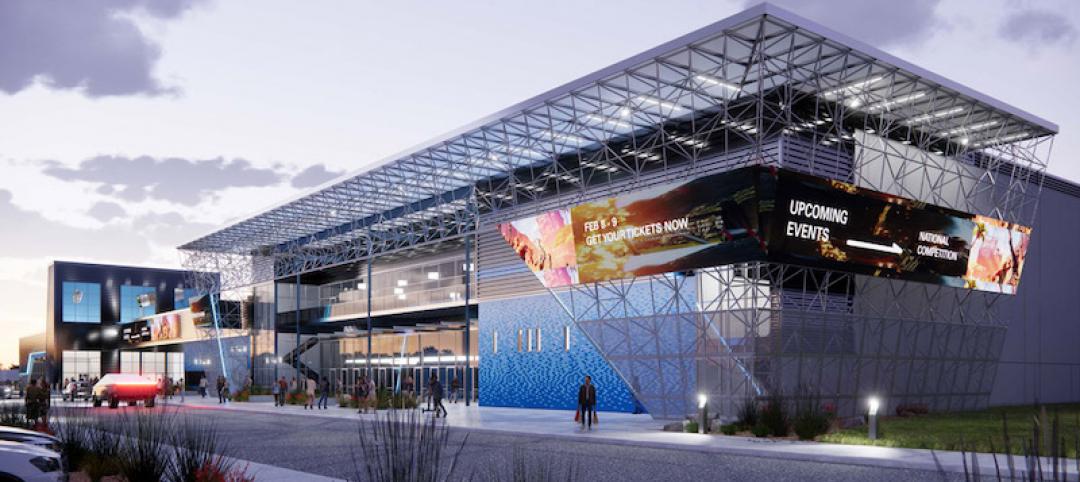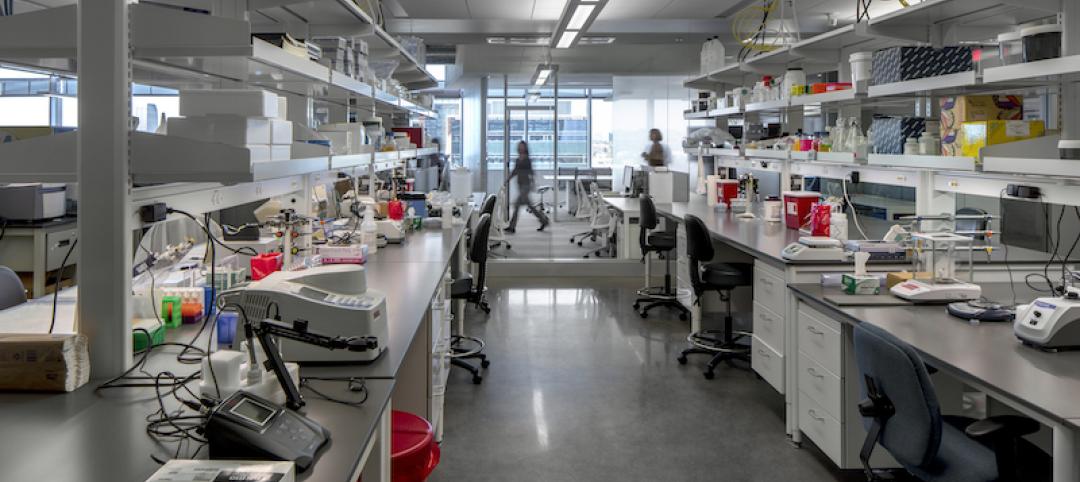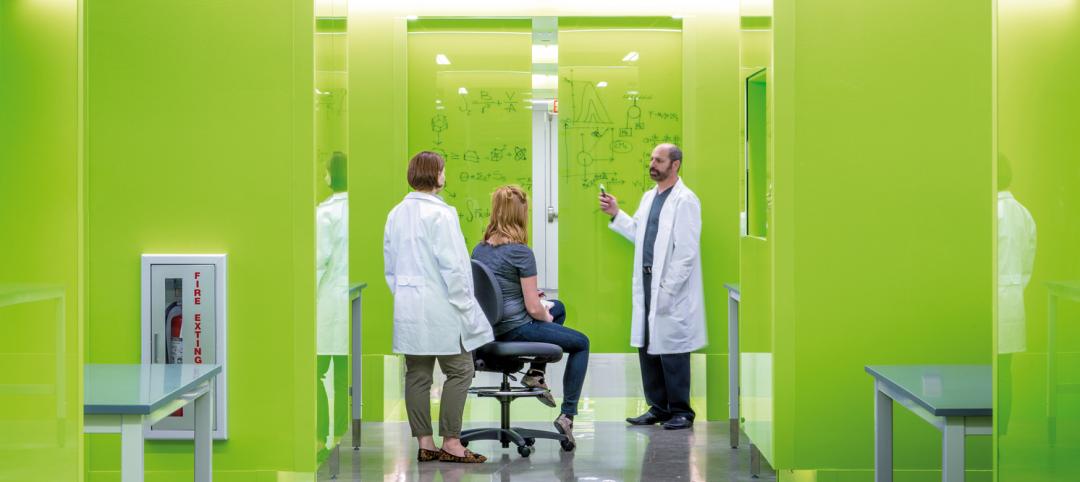With demand for lab-based research increasing, the redevelopment of vacant office space for life science applications has been gaining traction. Last May, for example, CBRE estimated that half of the 125 office conversion projects that were underway then were being adapted for life-science use.
Among the recent conversions are two office buildings, 32,000 and 52,000 sf, within the Rock Creek Property Group-owned Precision Labs campus in Germantown, Md., that have been made into a cGMP-ready white box facility and a state-of-the-art lab, respectively.
Ware Malcomb’s science & technology group, working in tandem with the firm’s interior architecture and design and site planning studios, completed this adaptive reuse project last June with the general contractor Coakley & Williams Construction, the MEP engineer CFR Engineering, and the CE VIKA-MD. Rock Creek Property, the project developer, retained the services of Facility Logix as the subject matter expert. (Ware Malcomb disclosed information about the project last month.)
Office onversions focus on MEP upgrades
To convert these office buildings into move-in ready speculative BSL-2 labs, the building team focused on enhancements to their electrical, mechanical, and wastewater infrastructure within the context of the site’s original zoning.
The single-story 20430 Century Boulevard building (the white box conversion) was reimagined to accommodate a full-building headquarters with 20-ft clear heights, 30x40-ft column spacing, five loading docks, and optimal utility services and floor load capacity. The upgraded utilities provide tenants with full autonomy to customize the space as needed.
The two-level 20440 Century Boulevard building (the lab) was transformed into a multi-tenant life science office/lab space with six BioSafety Level 2 wet lab suites ranging from 2,500 to 7,500 sf with 15-ft clear heights and modern mechanical systems.
According to Ware Malcomb, the building team considered sustainability measures that would control costs and minimize construction waste. These included maintaining existing suite demarcations and lighting fixture locations, and reusing air handing and other mechanical equipment. The team installed new energy efficient LED lighting, and GreenSpec- and Watersense-licensed plumbing fixtures. Also installed were a high efficiency energy recovery variable refrigerant flow system for heating and cooling, and a building automation system to control and monitor the HVAC equipment.
“The project exemplifies innovation, flexible design, and creative repositioning,” said Lori Ambrusch, Ware Malcomb’s Director of Science & Technology, in a prepared statement. The cost of the conversions was not disclosed.
Last June, for the website LabDesign News, Ambrusch co-authored, with CFR’s Vice President Jason Sambolt, an article that addressed design and engineering considerations for office-to-lab conversions. The article points out, for example, that there is a better chance of the building’s existing electrical service being adequate if there is not a need for a large amount of lab equipment, and the building has a natural-gas service. If an electrical service upgrade is required, building teams must account for extended distribution lead times for switchgears (up to 52 weeks at the time of the article’s publication), as well as the fact that larger switchgears will decrease rentable square footage.
Related Stories
Laboratories | Nov 16, 2020
Washington State University’s new Plant Sciences Building opens
LMN Architects designed the project.
AEC Tech Innovation | Sep 18, 2020
New Innovation Center should heighten Port San Antonio’s tech profile
The facility will include a 2,500-seat arena and serve as new home for the city’s S&T museum.
Laboratories | Aug 25, 2020
Video: What's driving the boom in life sciences real estate?
JLL's Audrey Symes discusses the drivers of growth across the nation's life sciences cluster hubs.
Laboratories | Jul 24, 2020
Customized labs give universities a recruiting edge
CO Architects is among a handful of firms that caters to this trend.
Laboratories | Jun 24, 2020
CDC set to build the most advanced high containment laboratory in the country
Flad Architects, Page Southerland Page, and WSP will plan, program, and design the HCCL.
University Buildings | Jun 3, 2020
Renovation can turn older university buildings into high-performing labs
David Miller of BSALifeStructures offers technical advice on renovation of college and university laboratories and scientific research facilities.
Giants 400 | Aug 13, 2019
2019 Science + Technology Giants Report: Operational flexibility is a must for S+T buildings
The science and technology (S+T) sector is arguably the industry’s most complex because it caters to a diverse clientele with specific priorities and imperatives, according to Building Design+Construction's 2019 Giants 300 Report.
Laboratories | May 21, 2019
Georgia Tech Research Institute adds 350,000 sf of specialized tech facilities
McCarthy Building Companies with Flad Architects acted as the design-build team.
Laboratories | Apr 23, 2019
Translational health science environments: 6 strategies for open innovation and knowledge transfer
Simply putting researchers and clinicians in the same building with hopes that serendipitous collaborations will ensue will often not yield the outcomes organizations seek.
Sustainable Design and Construction | Apr 9, 2019
One of the largest zero-carbon, net-zero buildings is rising in Spokane
Catalyst will be part of an innovation hub, with Eastern Washington University as its main tenant.
















